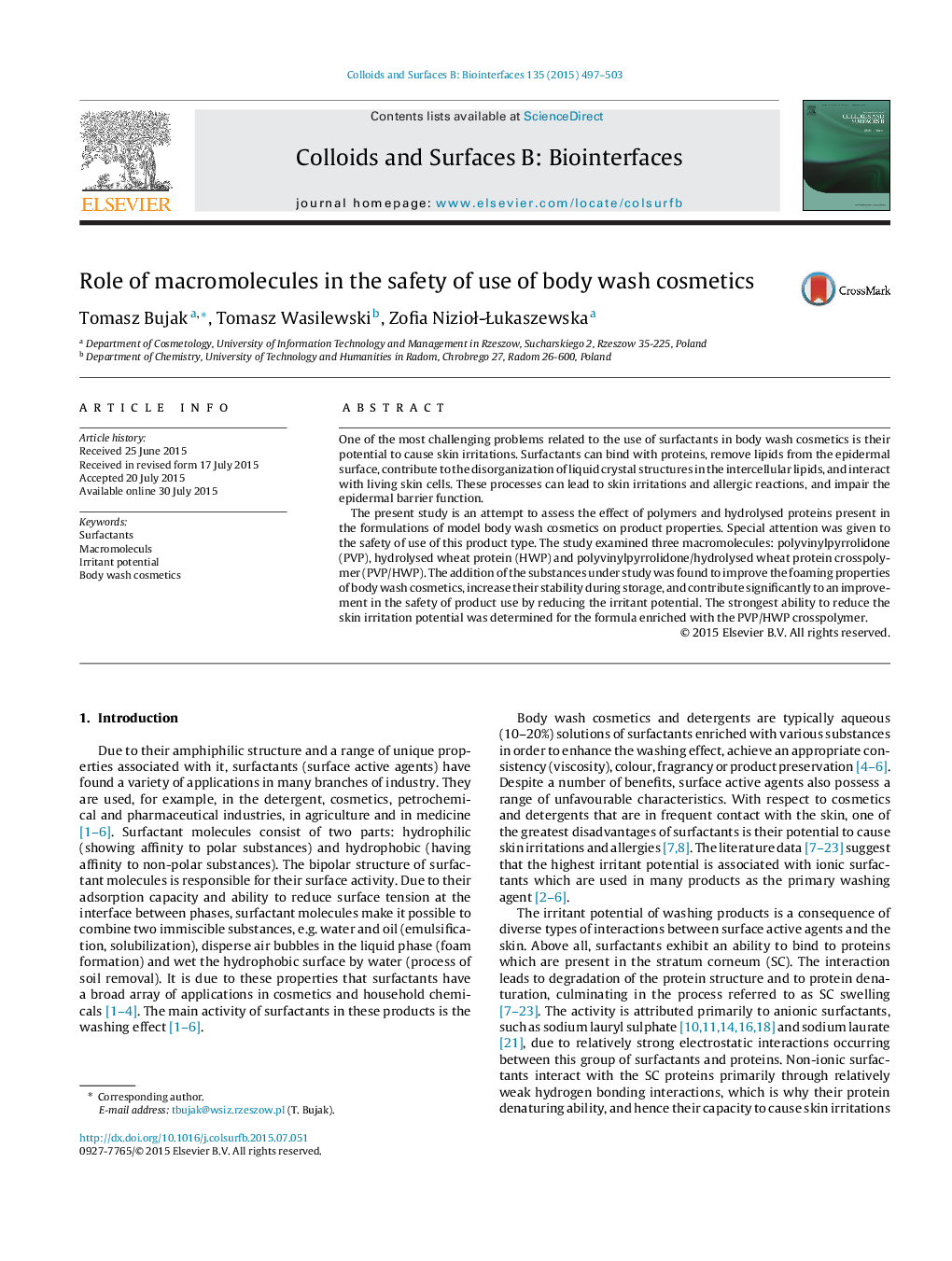| Article ID | Journal | Published Year | Pages | File Type |
|---|---|---|---|---|
| 599270 | Colloids and Surfaces B: Biointerfaces | 2015 | 7 Pages |
•Macromolecules increase the safety of use of body wash cosmetics.•Macromolecules improve the foaming properties of body wash cosmetics.•Macromolecules limited interactions of surfactants with the skin surface proteins.•The introduction of macromolecules to formulations of body wash cosmetics reduces them irritant potential.
One of the most challenging problems related to the use of surfactants in body wash cosmetics is their potential to cause skin irritations. Surfactants can bind with proteins, remove lipids from the epidermal surface, contribute to the disorganization of liquid crystal structures in the intercellular lipids, and interact with living skin cells. These processes can lead to skin irritations and allergic reactions, and impair the epidermal barrier function.The present study is an attempt to assess the effect of polymers and hydrolysed proteins present in the formulations of model body wash cosmetics on product properties. Special attention was given to the safety of use of this product type. The study examined three macromolecules: polyvinylpyrrolidone (PVP), hydrolysed wheat protein (HWP) and polyvinylpyrrolidone/hydrolysed wheat protein crosspolymer (PVP/HWP). The addition of the substances under study was found to improve the foaming properties of body wash cosmetics, increase their stability during storage, and contribute significantly to an improvement in the safety of product use by reducing the irritant potential. The strongest ability to reduce the skin irritation potential was determined for the formula enriched with the PVP/HWP crosspolymer.
Graphical abstractFigure optionsDownload full-size imageDownload as PowerPoint slide
